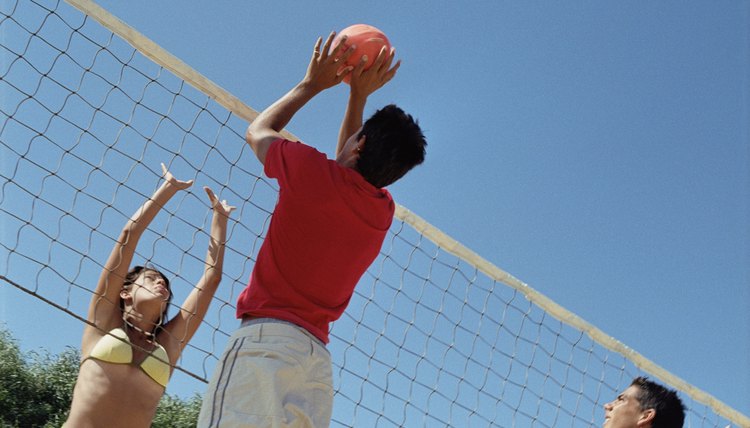Volleyball Rules for a Double Hit

Double hits in volleyball are often judgement calls by the referees, as the action happens so fast it's hard to detect with certainty. The double hit rules, as set by USA Volleyball, determine instances when a double hit is allowed and when it's not acceptable, but the final call happens on the court when the referee watches the action.
Double Hit Definition
A double hit occurs when a player touches the ball with more than one body part while trying to hit the ball. This is often the shoulder, upper arm or upper body, where the contact is nearly simultaneous with the player's hands hitting the ball. The ball could also bounce off a player's body part, such as her knee, before she hits with her hands. The secondary body contact is usually accidental, but it's still not allowed in most cases.
Unacceptable Double Hits
Double hits are not allowed during basic play, such as when a player is returning a ball or setting it in the air for another player to hit over the net. If a player's hands aren't together when she hits the ball, for example, the referee might call a double it because one hand hit the ball before the other. If a player sets the ball which is then hit by another player on her team, the first player can hit the ball again to send it over the net; each team is allowed three hits per play. As long as the first player doesn't touch the ball twice in a row with any body part, she can hit it twice during one play if her hits are separated by a hit by another player.
Acceptable Double Hits
There are a couple of occasions when it's acceptable for a player to hit the ball twice in succession. When the opposing team sends hard hits, such as during a serve or a spike, double hits are acceptable. In a serve receive play or while digging -- or falling quickly to your knees to hit the ball before it touches the floor -- double hits are allowed. When a player jumps at the net to block a spike from the other team, the block isn't considered a hit. This means that if the player hits the blocked ball up in the air, then hits it a second time to send it over the net, no double hit should be called.
Multiple Player Contact
Several team members may scramble for the ball and touch it at the same time, which doesn't count as a double hit. If two people touch the ball simultaneously, it counts as two of the three hits per play. Neither of those two people can touch the ball in that play to send it over the net; if one does, it's considered a double hit, so a third player must finish the play. The same rule affects three people who touch the ball. However, that counts as three hits, the maximum number allowed on each play. No one else on the team can touch the ball in that play.
